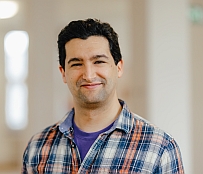Simulation and Modelling
Today, modelling and simulation methods play an increasingly decisive role in designing new materials. On the one hand these methods can predict the structure, the stability and properties of a material on different time and length scales reducing the time and costs in the development and on the other hand the methods are used in joint with experimental methods to gain new insights and a better understanding about the fundamental physics in these materials. In general, results from experiments are used as input for models, while improving these models will lead to an explaination of observations, both in theory and in experiments.
To investigate processes on different time and length scales we use the following methods for the research on materials:
- Density Functional Theory
- Crystal structure prediction
- Thermodynamic properties
- Diffusion
- Elastic properties
- Chemical bonding analysis
- Atomistic simulation
- Dynamische Prozesse wie z.B. Versetzungen Dynamical processes e.g. dislocations
- Thermodynamics of melting
- Defects and transition states
- Materials under extreme conditions
- Phase field simulation of diffusion controlled phase transitions
- Liquid-solid transitions
- Solid-solid transitions
- Grain growth
- Multi physics processes
- Phenomenological thermodynamics and kinetics simulation
- Phase diagrams
- Thermochemistry
- Solidification plots
- Precipitations
- Heat treatment
- Constitutive modelling of high temperature materials and FEM analysis of construction parts (in cooperation with Prof. Naumenko)
- Creep properties
- Annealing of the microstructure of multiphase materials
- Destruction and fracture processes





